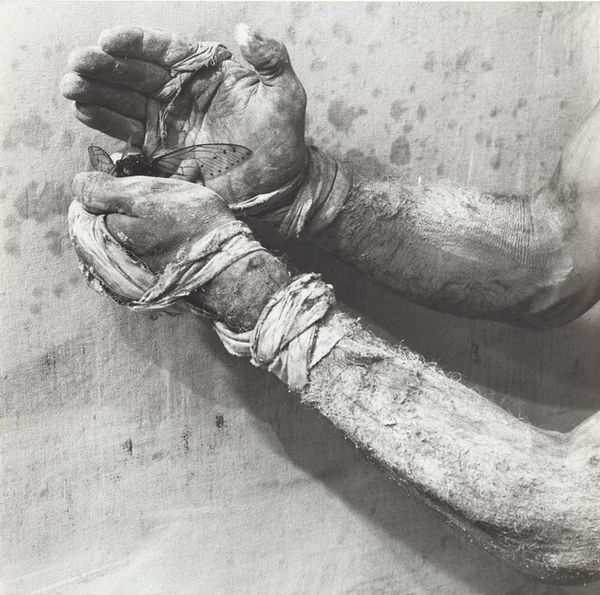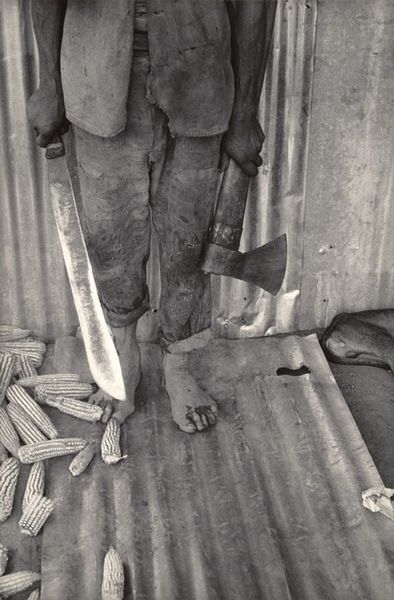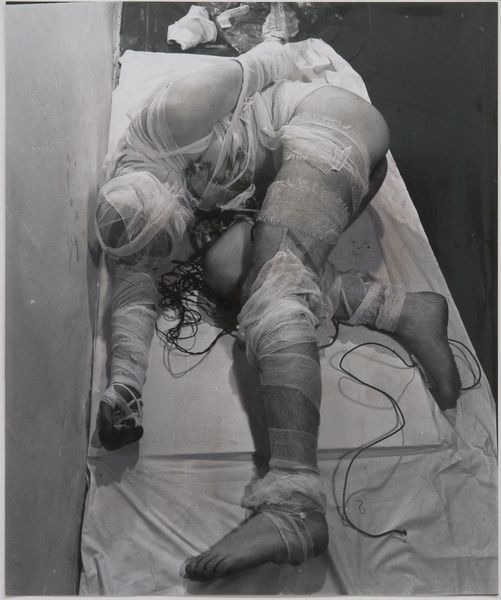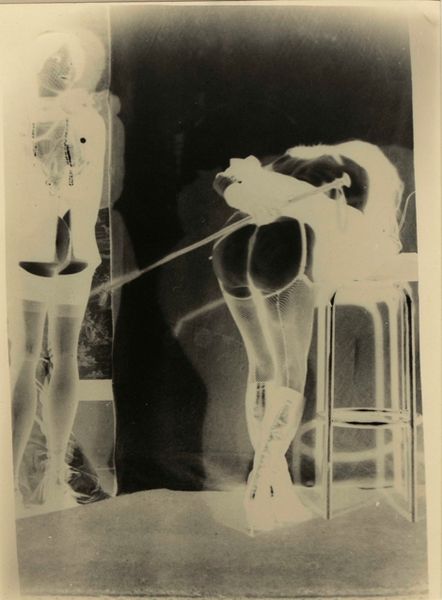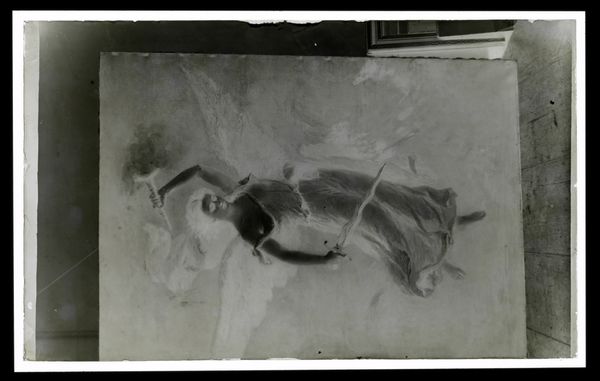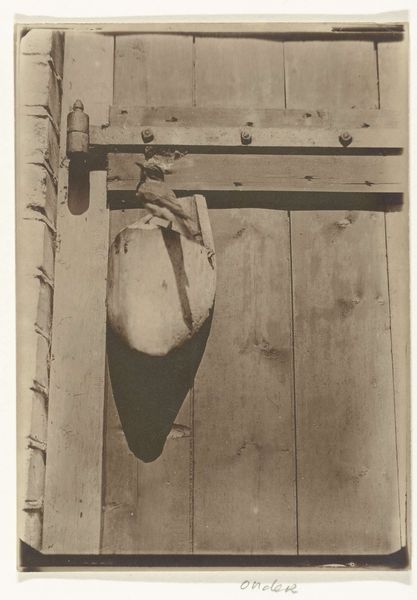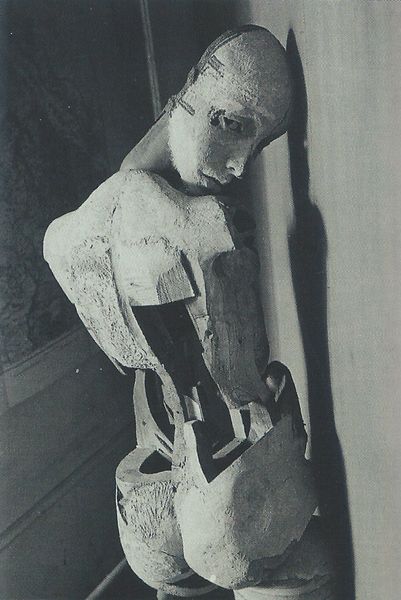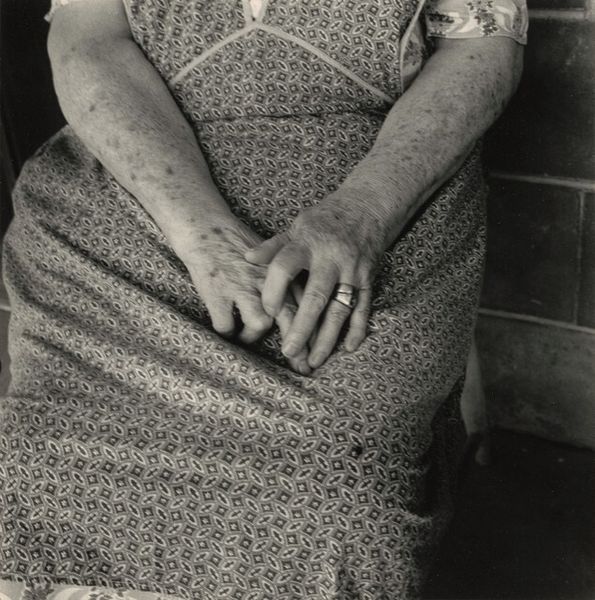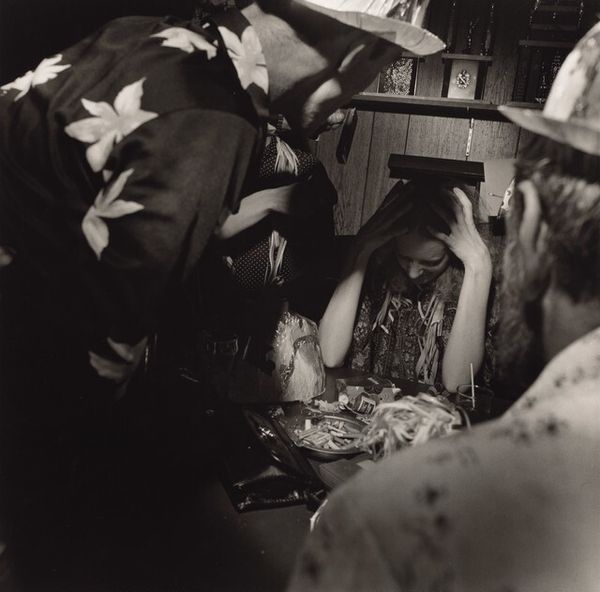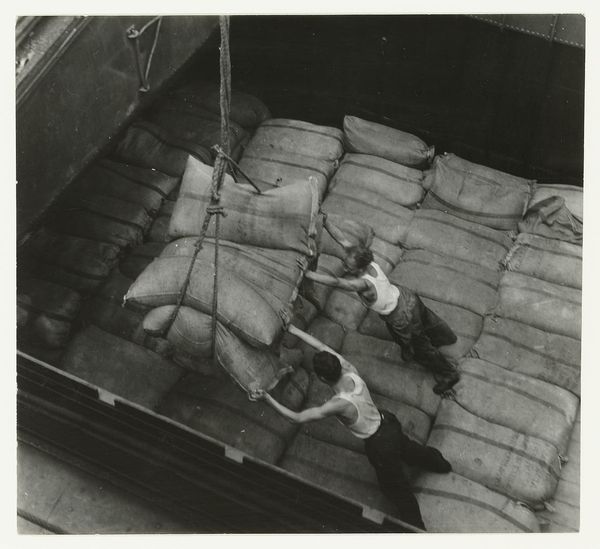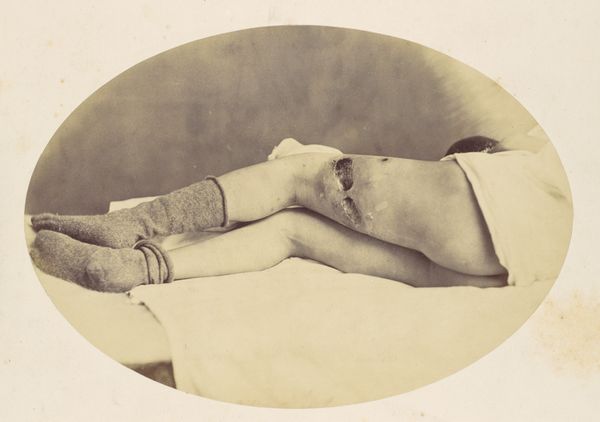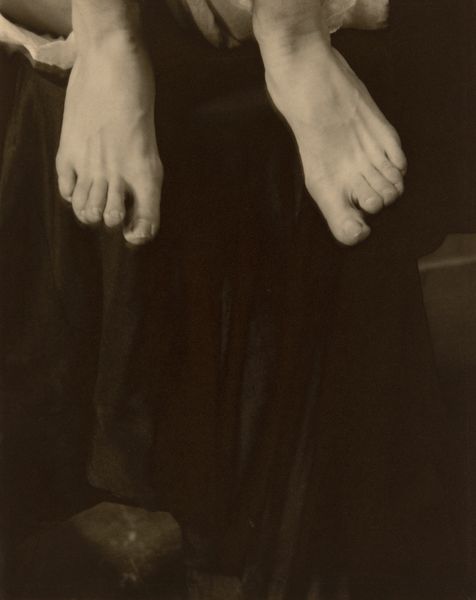
photography, gelatin-silver-print
#
sculpture
#
figuration
#
photography
#
gelatin-silver-print
#
monochrome photography
#
history-painting
#
realism
#
monochrome
Dimensions: image/sheet: 21.9 × 16.3 cm (8 5/8 × 6 7/16 in.)
Copyright: National Gallery of Art: CC0 1.0
Curator: This is a photograph from 1945 with the stark title "Death Was the Price Paid for This Drink of Water…" rendered as a gelatin-silver print. What’s your first reaction to it? Editor: My immediate response is one of profound unease. The stark monochrome emphasizes the textures, highlighting the unsettling rigidity and slumped posture of what appears to be a body. The light and shadow play adds an almost sculptural quality to the grim subject. Curator: It’s certainly meant to evoke a reaction. The pose, almost supplicating before a water source, directly links to the implied sacrifice – death as the price. Water, universally a symbol of life and purification, here is tainted. The body, covered in what could be chemical residue, speaks volumes of industrial contamination or perhaps wartime atrocity. Editor: Indeed. Compositionally, the artist guides the eye downward, tracing the slumped figure towards the floor. The hard edges of the box offer an unnatural framing. There is an intentional disjunction of forms between the living/mechanical and smooth/textured. It communicates loss and degradation effectively. Curator: Precisely. Water is a complex signifier throughout history. Consider baptism, or the River Styx, but here we face its antithesis. This isn’t renewal but desecration; this isn’t a journey across a boundary, but a forced conclusion. The symbolism is brutally inverted. Editor: What intrigues me is the surface texture itself. The print seems almost deliberately distressed, with varying tonal values. It suggests not only physical corruption but a conceptual blurring, mirroring the indistinct line between victim and cause, between need and demise. Curator: The anonymity enhances its universality, I feel. The scene becomes an archetype, a lament echoing across time whenever exploitation overshadows fundamental human need. It invites deep reflection on ecological devastation, socio-economic imbalance and the heavy price exacted upon humanity. Editor: It’s powerful. For me, focusing on its material properties—the contrast, the granular textures—brings the immediate physical experience of something ruined to the fore, while your analysis grounds the specific impact of the imagery. Curator: And viewing it together provides perhaps a more balanced consideration. The convergence of form, function, and symbolism to deliver the weight of history in visual space. Editor: Agreed.
Comments
No comments
Be the first to comment and join the conversation on the ultimate creative platform.
